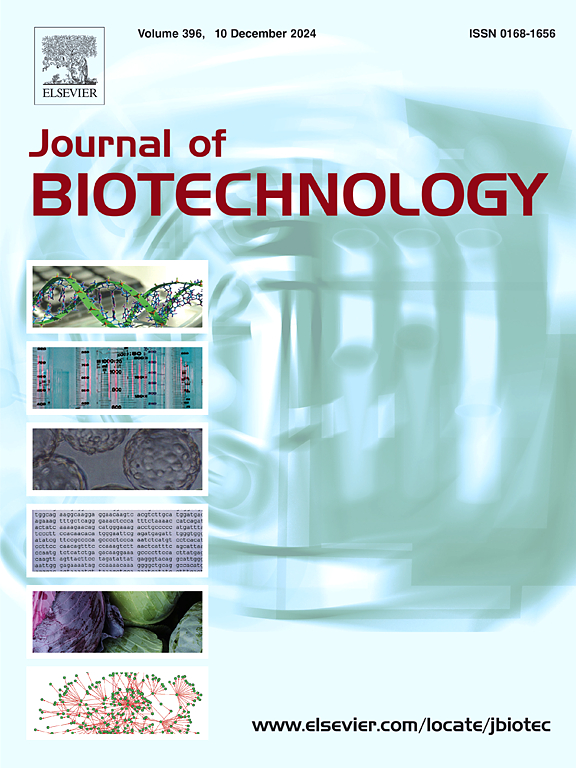Enhancing nicotinamide mononucleotide production in Escherichia coli through systematic metabolic engineering
IF 4.1
2区 生物学
Q2 BIOTECHNOLOGY & APPLIED MICROBIOLOGY
引用次数: 0
Abstract
Nicotinamide mononucleotide (NMN) serves as a crucial precursor in the biosynthesis of NAD+ and has garnered significant attention in the food, dietary supplement, and cosmetic industries. This study engineered an Escherichia coli strain for enhancing NMN production. Firstly, the strain with reduced NMN degradation and the ability to transport NMN extracellularly was constructed. Meanwhile, the gene encoding nicotinamide phosphoribosyltransferase (pncA) was disrupted to minimize substrate nicotinamide (NAM) degradation. Then, the induction starting point was optimized to alleviate the metabolic burden on the engineered strain. Subsequently, systematic remodeling of E. coli's glucose metabolism was conducted to enhance its suitability for NMN production by overexpressing key enzymes of the pentose phosphate pathway (Zwf and Gnd), knocking out genes related to the Entner-Doudoroff pathway (gntR and edd), and further attenuating the glycolytic pathway. Then, we concentrated on optimizing the cellular metabolic state, meticulously balancing intracellular redox homeostasis. Finally, using glucose and 2 g/L of NAM as substrates, the extracellular NMN yield reached 4.96 g/L, which is the highest yield reported so far in similar research. These findings contribute to the commercial production of NMN and offer valuable insights for constructing efficient cell factories for other nucleotide compounds.
求助全文
约1分钟内获得全文
求助全文
来源期刊

Journal of biotechnology
工程技术-生物工程与应用微生物
CiteScore
8.90
自引率
2.40%
发文量
190
审稿时长
45 days
期刊介绍:
The Journal of Biotechnology has an open access mirror journal, the Journal of Biotechnology: X, sharing the same aims and scope, editorial team, submission system and rigorous peer review.
The Journal provides a medium for the rapid publication of both full-length articles and short communications on novel and innovative aspects of biotechnology. The Journal will accept papers ranging from genetic or molecular biological positions to those covering biochemical, chemical or bioprocess engineering aspects as well as computer application of new software concepts, provided that in each case the material is directly relevant to biotechnological systems. Papers presenting information of a multidisciplinary nature that would not be suitable for publication in a journal devoted to a single discipline, are particularly welcome.
 求助内容:
求助内容: 应助结果提醒方式:
应助结果提醒方式:


